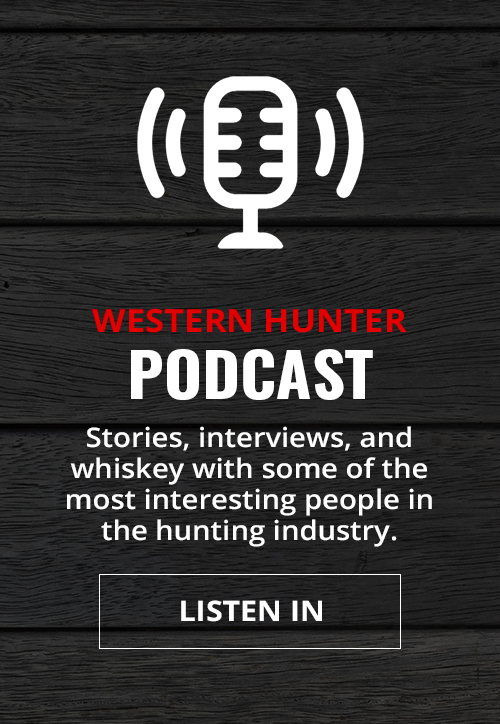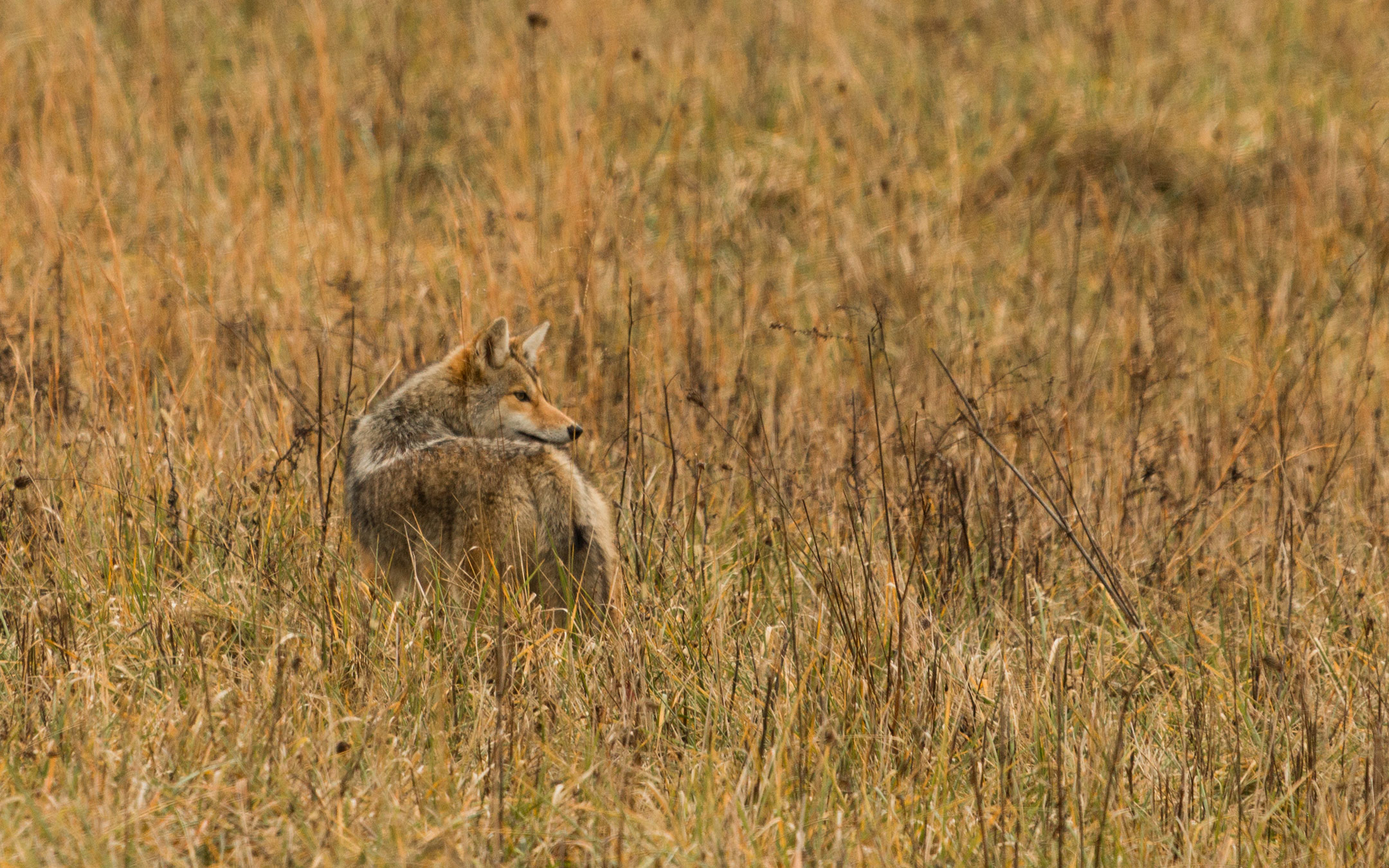
NOTICE: Certain links on this post may earn a commission for Western Hunter Magazine from Amazon or our other affiliate partners when you make a purchase. Thank you for your support.
Tips for More Success with a Coyote Call
To me, coyotes are to the land what sharks are to the ocean. Like a shark, coyotes will eat almost anything. It doesn't matter if it's a mouse or a moose, a grasshopper or a grouse. If a coyote can kill it and eat it, then it's going to get eaten. If there’s nothing easy to kill nearby, then a coyote is happy to eat whatever dead animal it finds - even if it's weeks old and smells to high heaven. I know on occasion coyotes will eat fruit, berries and grain, but that’s only when they can't find something to kill and eat. A coyote call doesn't always work, but when it does, they come running.
This Ain’t Disney
There have been cartoons that have highlighted both sharks and coyotes, portraying them as having humanlike emotions. As hunters, we know they don't have remorse or human traits. A shark is happy to rip a baby seal apart and a coyote gets even more excited and bloodthirsty when a fawn is screaming as it eats it while it's still alive. This is one reason I despise TV shows or movies that falsely show animals with human traits. They are indoctrinating our youth to a false sense of reality.
Despite Hollywood’s characterizations, coyotes are really pretty easy to figure out. Like most predators, they think with their stomach or their genitalia. It's really that simple. By taking advantage of this fact, we can harvest more coyotes, which saves more game animals in the process.
If you had a room full of coyote hunters and asked, “What's the best way to call in a coyote?”, every hunter would have a different opinion. I’ve heard arguments on everything from the length of time to call, to the best type of call, to what sound is best. I’ve even heard some argue until blue in the face on the merits of one electronic call over the other. Still others will argue as strongly for the merits of a mouth call.
In my early 20s, I started trapping and coyote calling seriously. Each taught me a lot about them, their habits, and tendencies. Now it’s been 30 years since I first caught the predator bug. In that time, I’ve successfully called in coyotes in 16 states and multiple Canadian provinces, in weather from 80 degrees to -30. I still have a lot to learn and still make plenty of mistakes, but I’m convinced that nearly all coyote calls can work if it's the right time, with the right conditions, and the right coyote. A $10 mouth call can work great in the right situation.
As an outfitter and a land manager who controls predators on some of the ranches I lease to hunt big game, I don't want anything that will work “sometimes”. I want to kill coyotes every time I go out, because where I hunt coyotes, they often cause issues because they’re killing calves or damaging animal populations. I hunt areas where the deer or antelope are experiencing almost 70% fawn loss due to coyotes.
Here is my opinion on how to drop more land sharks, and a list of what I use, how I use it, and why I use it. Bear in mind, coyote calling can work, but some things just work better than others. A .50-caliber flintlock muzzleloader and my Rock River Arms AR chambered in .223 are both considered guns. But I know which one I’ll grab if a North Korean soldier parachute onto my ranch.
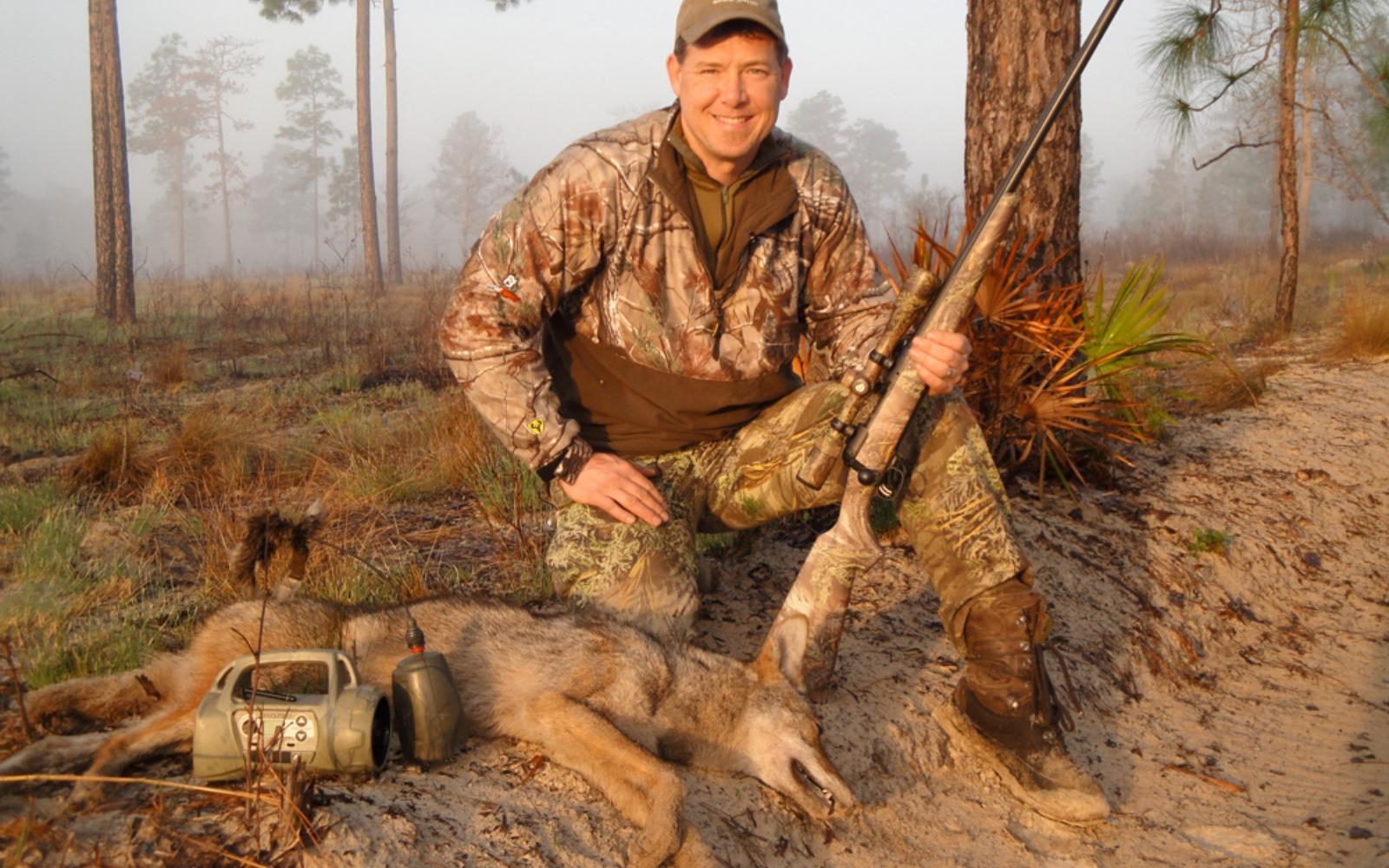
Calls
Although they’re more expensive, I prefer an electronic coyote call (e-call) over a handheld mouth call. I started out coyote hunting with mouth calls and still use them occasionally, but the advantages of an e-call far outweigh the advantages of a mouth call.
One big advantage is hundreds of different sounds available at the touch of a button. Another big advantage of an e-call is that I can put the call 50 to 100 yards away from me. Then, when a coyote comes in, he’s focused on the call and not me, allowing me time to get my gun up without getting spotted. By getting the call out in front of and away from me, I can position the coyotes for a good shot. If coyote circles downwind of the call, as educated coyotes often do, they are downwind of the call, not me, and I can make the shot.
My go-to is a FoxPro e-call. I like them because speaker quality makes a huge difference in how natural the coyote call sounds. If it doesn't sound real, then a coyote will rarely come within range. I also like the myriad of sounds they have in their library.
In the interest of full disclosure, FoxPro sponsors my show, Predator Nation, that airs on the Sportsman Channel. However, I purchased and used FoxPro calls long before the show started, and before we worked together.
I genuinely feel my call has been and still is one of the most important factors of why I’m consistently successful, even on pressured dogs on private land or educated dogs on public land. If your coyote call doesn't sound real, then the coyotes won’t close the distance, and odds are you’ll have an educated coyote the next time you go to that area. I always spent the extra money to get a better coyote call with high-quality speakers and lots of call sound options.
What Sound and Why
If you’re a beginner, you can’t go wrong with some standard coyote calls that routinely kill - a dying rabbit or a bird in distress that sounds like a woodpecker or a shorebird. The only issue is that these are the most commonly used calls. Thus, these are the first calls to which coyotes get educated.
Years ago, I witnessed something in Nebraska that changed the way I coyote call. It also taught me a lot about them and how quickly they learn that certain sounds mean danger.
My buddy and I were hunting on a ranch where the owner had complained to me about coyote problems the year before. My buddy and I snuck up to a large, wooded draw with the wind in our favor. I set up my FoxPro and started playing a rabbit in distress. Shortly afterward, three coyotes came out of the draw and started running away across the open prairie.
After traveling a few hundred yards, they stopped and looked our way. I quickly grabbed the remote and switched the call to a puppy in distress. It only took a few seconds for the new sound to reach them, and when it did, all three coyotes took off running right at us.
Later, I asked the rancher if anyone else had been out coyote calling. Sure enough, he had let a few guys from town come out the week before. He said they had called the whole ranch and left without killing a coyote.
I learned a lot from that encounter. It's rare you get to see coyotes react to different calls. I wondered how many times that had happened to me in thick brush or trees, where I had no idea that I had actually scared them with the coyote call I was using.
By going with different sounds, I now have success in areas where most callers don't or in areas where the dogs are all educated. I’ve called coyotes in using fawn bleats in pressured areas where they won't come into a rabbit or bird sound. If I’m in areas with cattle, I’ll go with a calf bawl. I’ve killed some big mature dogs that wouldn't have been fooled by a rabbit call.
I now keep track of what sound I use in an area and whether I kill coyotes or not. The next time I go to that area, I use a different sound.
Winter is the best time to kill coyotes with “food” sounds. Since coyotes, like all animals, need more calories in winter, they’re more apt to come in hoping for an easy meal when it’s cold. Some of my favorites are distressed animal sounds like a squirrel, shorebird, turkey, fawn, calf, goats, and even prairie dog. These sounds are great, and there are literally hundreds of others.
In early spring or summer, I don't have as much success with those sounds, because there are baby birds, rabbits, fawns, and all types of other small game and insects for the land sharks to feast on.
When it's not cold and coyotes are mating, I tend to have more success using curiosity, territorial howls, or even locating howls. A male coyote challenge call can also be great for bringing in coyotes that think they have another yote in their country. Female howls work well, as do puppy screams or warning and curiosity barks.
I can emulate many of these sounds with a mouth diaphragm and tube, but it takes practice to master. All these sounds are available on my e-call, and I can choose what I want in seconds. That is a huge advantage of e-calls.
How Long to Call
Once I choose my sound, I usually let it play nonstop for 30 to 45 minutes on a calm day out West. If it's windy, rainy, or snowing, I may cut that call time in half.
I also reduce my call time to only 15 to 25 minutes if I’m hunting thick, forested country like in Florida, Georgia, or Alabama. In those situations, where bad weather or thick brush keeps the call from carrying farther, I shorten my call time, assuming that if a coyote heard my call, it should’ve been into my setup by then.
Some people like to call for only 3-5 minutes, then stop for a minute and then call again. I’ve tried that method, and although I’ve killed coyotes with the call/stop method, I’ve watched coyotes in open country lose interest when the call stopped. Some coyote callers will switch up the sound every few minutes, hoping to hit that magic sound that triggers a coyote into running in. I sometimes switch up, but 90% of the time, I stick with the first sound I choose.
The Best Time to Coyote Call
In my experience, the best time to hunt coyotes is in winter or breeding season. I hunt them all year and have success all year, but certain times are much easier than others. If I had to choose just one month to hunt, I’d choose January. The hides are prime and it’s one of the coldest months of the year.
I’d also always choose mornings over evenings. Most coyote fanatics I know just have more success in the mornings. I have theories on why, but I’ll spare you my hypothesis.
Where it’s legal, I’m also a huge fan of night hunting. Coyotes are braver at night and tend to make more mistakes. They hunt primarily at night anyway and I’ve had some of my most productive hunts at night using a myriad of methods, including green and/or red spotlights, thermal scopes, and night-vision scopes.
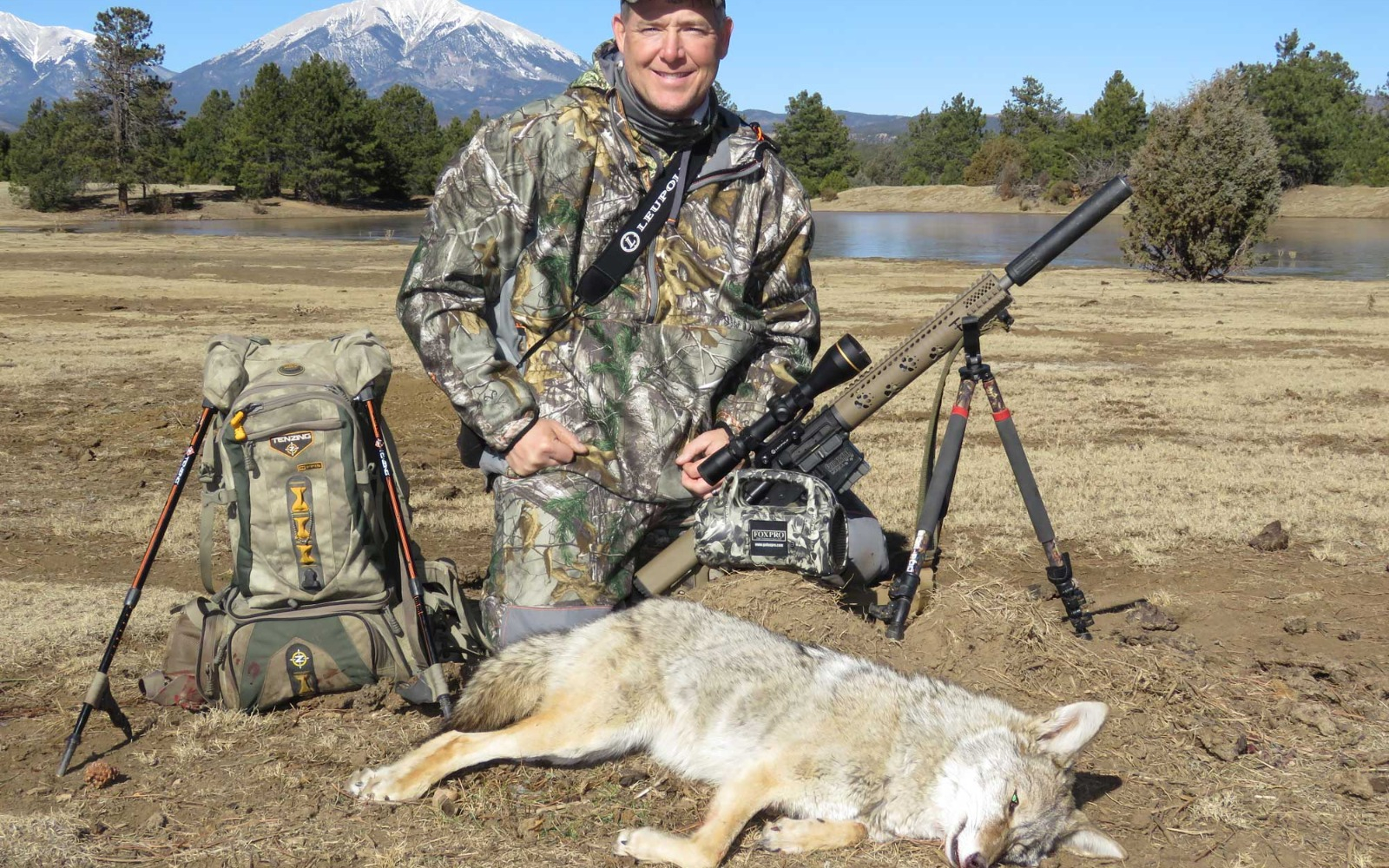
Suppressors
I’ve had a lot of people ask my opinion on suppressors. I’m a huge fan. I rarely if ever shoot subsonic ammunition out of one because subsonic is only around 1000 FPS, +/- a few fps. I don't like the rainbow trajectory I get with that slow of a bullet.
I do love a suppressor when I’m shooting supersonic, as it reduces noise level. I’m still shooting my Hornady SuperFormance ammunition at its 3465 fps without the loud noise I’d have without the suppressor. I feel this often allows me to call in multiple dogs without moving locations.
It's the Little Things
I attribute the success I have coyote calling to the little things. Here are a few to consider:
- Wind direction (obviously)
- The direction of approach. I try and figure out if I can use natural obstacles like a river, road, steep cliff, or thick brush to keep a coyote from approaching downwind.
- Sun’s position. If I start coyote calling before dawn, I check to be sure the sun won't light me up like a candle when it rises. I try and set up in the shade, with the sun in the coyote’s eyes during the entire call sequence.
- I make sure I only make one scent trail when I set my coyote call out because if one cuts your trail on the way in, it's usually game over.
- I commonly use Conquest rabbit or coyote scent on my call to help keep a coyote in range for an few extra seconds if they make it into my call without me getting a shot.
- I always have a tripod as a rest (I use Bog-Pod) so I can make a steady shot.
- A rangefinder is a must (I use Leupold). I range everything before I turn my coyote call on in case something happens quickly.
- Use good camo (I use Realtree, often in Max-1). Pick a pattern that matches the area as well as possible.
- I usually incorporate a decoy, so if a wary old dog shows up, I can fool both his ears and his eyes.
If it seems like a lot of things to keep in mind and to carry...it is. Does carrying some extra gear and thinking about the little things help me hang more fur in the shed? Most definitely.
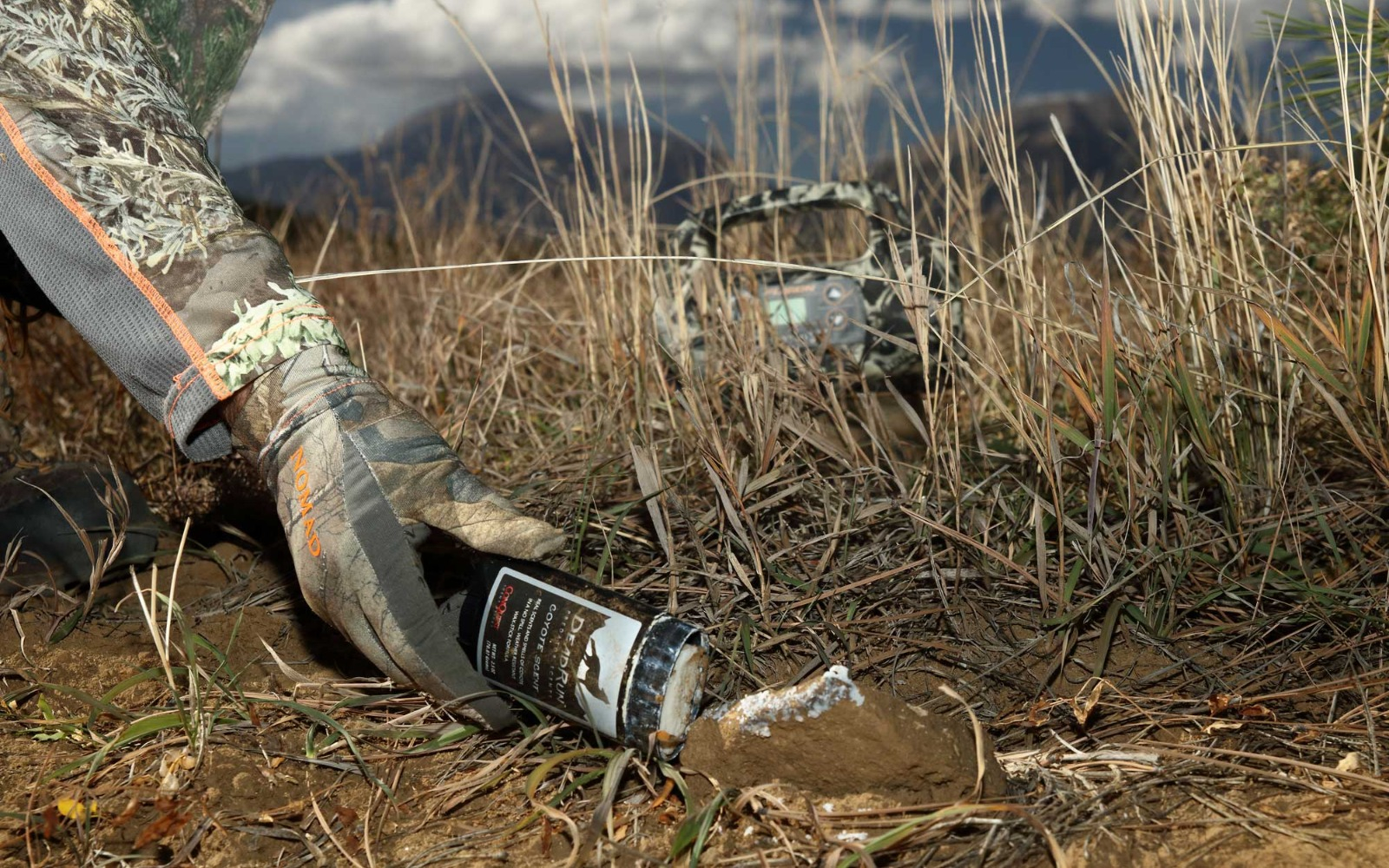
Give it a Fair Chance and You’ll Be Hooked
In closing, I’ll add that the biggest mistake I see with new predator hunters is not giving coyote calling a fair chance. I average calling in a coyote one out of every three sets in Western states and one out of six sets in heavily wooded areas in the East.
Sometimes it seems easy, and dogs run in every time. Other times, you can go days without seeing hide or hair of a land shark. Coyote calling is like grunting in a whitetail, calling in a gobbler, or bugling in an elk. It doesn't happen every time, but when it does, prepare to be hooked.



